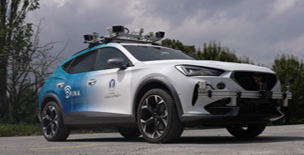Free with paid membership
Autonomous vehicle software needs a driver model to replicate the driver in the vehicle. Driver model determines the driving style and also the safety of the autonomous vehicles. Prediction and anticipation are very important for driving safety. Driving style is also an important factor for passenger comfort. The model should also enable fine tuning for different driving cultures so that road users can estimate the behavior. In this article, a driver model development and validation methodology is demonstrated. Three scenarios have been used to obtain results and compare the real driver behavior with that of the autonomous vehicle. Three drivers have driven in line with the scenarios on the DIL(Driver in the Loop) system and their driving behaviors have been compared with that of the autonomous vehicle software and the methodology to change the parameters to converge with that of the driver and to lead to predictive driver model is demonstrated.
Keywords: Driver model, driver in the loop simulation, predictive driver model
In the evolving landscape of intelligent transportation systems, microscopic driver models are essential for accurately simulating vehicle behavior and enhancing the development of Advanced Driver Assistance Systems (ADAS) and Autonomous Vehicles (AVs). These models aim to replicate the dynamics of driving vehicles, both individually and collectively, by capturing the intricate details of human driving behavior. The integration of human driving behavior into automated driving systems not only helps in predicting traffic flow and avoiding collisions but also plays a critical role in the acceptance and reliability of these systems.
Driver models must encapsulate the behavior of both human drivers and autonomous systems, incorporating specific driving styles and preferences. The challenge lies in creating realistic models that account for the myriad of factors influencing a driver's decisions, such as risk assessment, safety, and driving progress. Traditional models like the Intelligent Driver Model (IDM) and its extensions have paved the way for simulating longitudinal driving behaviors and lane-changing decisions. However, these models often fall short in scenarios involving multiple traffic participants and complex driving environments.
To address these limitations, a novel approach to driver model development through Driver-in-the-Loop (DIL) simulation and real data replay is proposed. This method involves using a driver in a simulated environment to perform the same driving tasks as an autonomous vehicle system running in the background. By comparing the driver's actions with those of the automated system, discrepancies can be identified, analyzed, and used to refine the driver model. Data for real world driving can also be digitized through the OPINA1 HIL system and predictive and anticipative driving can be integrated through rule-based and reinforcement learning.
